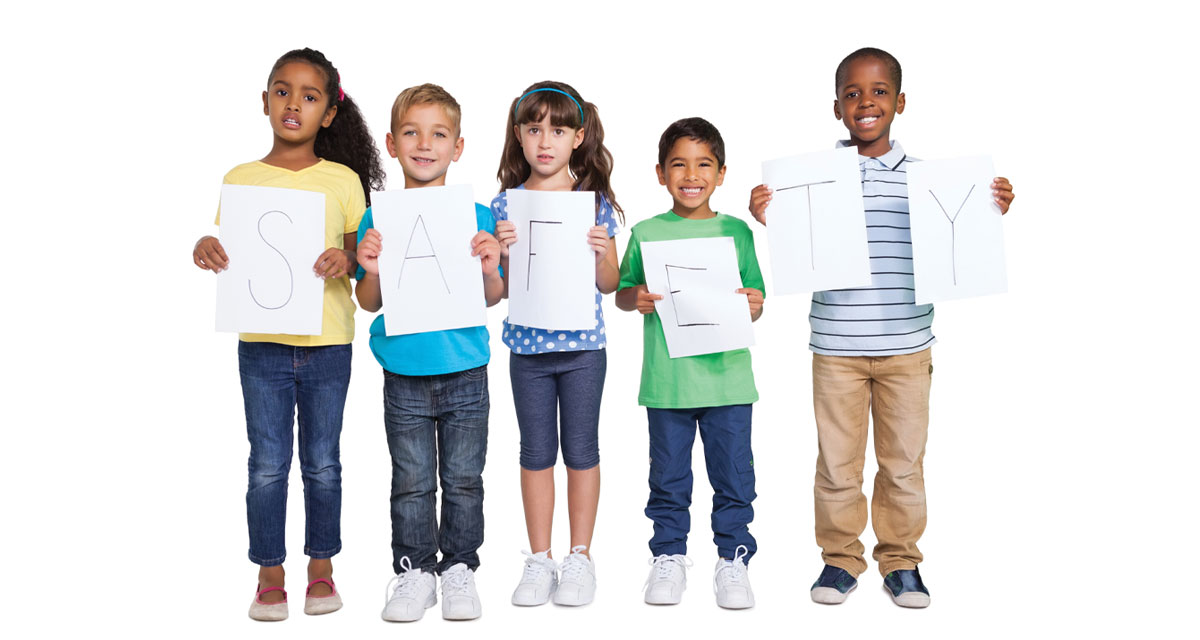Each month, this series will provide important facts and tips surrounding child safety in an effort to support parents and caregivers as they navigate reducing risks and creating the safest environment possible for the children in their lives.
Our littlest family members are most vulnerable to some very big risks as they are more susceptible to the dangers of accidents and abuse. November is National Child Safety and Protection month, serving as a reminder that we must be proactive in avoiding injuries and prioritize taking concrete action to protect the kids in our lives.
This month, we’ve rounded up a top 10 list of general safety categories that every parent and guardian should be knowledgeable on so they can create effective safety strategies.
#1 Childproof Your Home
Create a safe environment within your home and other caregivers’ homes for kids to learn, grow and thrive by eliminating safety risks. Install outlet covers, baby gates and cabinet locks, lock up harmful substances and secure furniture like dressers or TV stands to prevent accidents or falls.
#2 Teach Road Safety
Remind children about the importance of traffic rules such as using crosswalks, looking both ways before crossing the road and waiting for signals and traffic guards to give the signal that it is okay to cross. Reinforce the importance of avoiding dark clothing and wearing reflective accessories or clothing to give drivers increased visibility especially during the darker mornings and/or evenings.
#3 Body & Boundaries
Discuss body autonomy and the importance of respecting their own and others’ body boundaries. Make sure they understand what safe and unsafe touch is, anatomically correct body part names and what to say and how to assert themselves when something doesn’t feel right.
#4 Stranger Danger & Strange Behavior
Unfortunately, we have to teach kids that not all adults are safe adults. Remind them to be aware of their surroundings, not accept anything from unfamiliar grown ups and to always trust their instincts if something feels wrong or uncomfortable.
#5 Cyber Safety
In today’s digital age, it is crucial to educate children about online safety! Teach them about the risks associated with sharing personal information online and the importance of using strong passwords. Encourage open communication so they feel comfortable discussing any concerning online experiences knowing they can reach out to you or another trusted adult.
#6 Bullying Prevention
Discuss bullying with your child, and emphasize the importance of treating others with kindness and respect. Teach them strategies to handle bullying and unwanted behavior, such as seeking help from a grown up or teacher. Encourage them to be an advocate for others who may be experiencing bullying as well.
#7 Personal Hygiene & Wellness
Sickness can result in short term and long term health issues. Promote good hygiene practices such as washing hands frequently, covering their mouths when coughing or sneezing, and using hand sanitizers when necessary. Reinforce the importance of using tissues and disposing of them properly.
#8 Emergency Preparedness
Discuss emergency procedures with children using age-appropriate language that they can understand. This includes fire drills, lockdown drills, inclement weather procedures and evacuation plans. Teach them the importance of listening to instructions from adults and staying calm during emergencies.
#9 Fire Safety
Teach your child about overall fire safety, including the importance of not playing with matches, lighters or electrical outlets, or handling kitchen appliances that can pose a risk without proper supervision. Establish a fire escape plan, and conduct regular fire drills at home.
#10 Emergency Communication
Provide children with emergency contact information including your cell phone number and work number in the event they need to alert you to something. Practice memorizing this information for kids of all ages. Be sure they understand that calling 911 or alerting authorities for any reason other than a true emergency is a crime and never something we joke around about.
Taking Action When an Incident Occurs
Always have a first aid kit easily accessible as well as any important documents such as lists of medications your child is currently taking and phone numbers for contact information for pediatricians and emergency contacts. If you are unsure about the severity or care of an injury but have concern, don’t wait to head to your nearest emergency room or call 911. Helpful Resources to Learn More
- American Academy of Pediatrics (AAP) www.aap.org/
- Institute of Childhood Preparedness childhoodpreparedness.org/



















